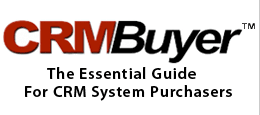At Cloudforce, New York last Friday, we heard a smattering of things we also got at Dreamforce. That was part of the plan because Salesforce bills its regional events as a chance to bring Dreamforce to the customer. As proof I heard that Marc Benioff and crew are off to Japan this week to do it all again and there are various other trips like Europe that they also do. That’s quite a travel schedule.
One of the less well-known parts of both events is the press conference held immediately after the keynote for members of the technology and financial analyst communities as well as the technology press. It’s also the most intimate part of the whole conference, the time when we get one on one with Marc and the atmosphere more resembles a graduate seminar than anything else.
Of course, Benioff has to maintain a certain reserve given his status as the head of a publicly traded company. Questions about future earnings are not encouraged and they can’t really be answered but people still like to ask. It’s fun to watch the non-answers.
Two ideas struck my radar in the press conference — one, the idea that Windows is “over” but also, a more mature attitude by Benioff toward competition. First Windows.
This wasn’t the first time I have heard Marc say that Windows is over but this time it had the ring of truth rather than being more like the hyperbole of a competitor. Benioff thinks Windows is no longer necessary and when you say Windows you might also include OSX or any other operating system whose purpose is to provide a general purpose operating environment for applications.
You know this in your bones by now. With applications and data becoming increasingly cloud resident, a much smaller and more secure operating system that supports a browser and not much more is about all you need. Google Chrome is a kind of new era OS and the Chromebook a new device that leverages these ideas. So the stage is apparently being set and Benioff thinks that Windows 8 will be an important inflection point in the history of the operating system.
You can already see problems with Windows revenues especially in the latest numbers the company reported last week. The Windows Division’s revenue was down 33% year over year and the company’s net income was off 22% with revenue down eight points over the prior year.
Microsoft has become another example of what Clay Christensen described in The Innovator’s Dilemma of a company wedded to its golden goose unable to pivot to the new revenue generator in part because the new generator would force revenues down. New things cost less and in the ever-ongoing product commoditization cycle less means less and you have to make it up on volume — that’s the cloud.
So, devices are what’s driving the market — the handheld a.k.a. phone and tablet, which come in multiple sizes for different applications. Devices use stripped down operating systems like iOS, Android and Windows Mobile (and Chrome) and users spend much more time in a vendor’s site or app than ever making the general purpose OS less and less necessary.
Microsoft has more or less seen the same thing coming, which explains at least on one level, the company’s rush to the cloud. You might even say similar things for Oracle and its latest release 12c. It goes without saying that the UI and the data center are different places and operating systems will continue to be as important in the data center as the air you breathe, at least for now. But Oracle is showing that it understands the new reality though it isn’t necessarily playing at the same level as Salesforce, which brings us to my second point.
I also saw a more mature attitude about competition than I could see just a few years ago and I think that was at least in part because Benioff knows he’s winning. He made the comment that the competition used to say they had a better approach than Salesforce, as in Larry Ellison’s words that cloud computing was all vapor. Competitors used to say that cloud or SaaS was dangerous to your business, that it was not secure or any of a hundred other things designed to spread FUD (fear, uncertainty and doubt). But that’s ancient history.
Now, Benioff noted, all the competition is saying, “They have what Salesforce has”, which is typically a variant of cloud computing designed to provide infrastructure as a service (IaaS) and thus keep customers locked in. Nevertheless, in other words, the dynamic has shifted and the competition has learned that is has to play a new game.
Finally, one more impression. It seems that Salesforce has now articulated three distinct ways of socializing the enterprise and they’ve done a good job of showing how their products apply in each case. The three cases involve socializing the vendor-customer interface, socializing the employer-employee interface and socializing the man-machine interface.
The vendor-customer interface is the oldest challenge and the place where Salesforce and CRM got started. The employer-employee interface is a bit newer and it is still being fleshed out but Salesforce and its partner ecosystem with companies like Jobscience, are populating the market with credible solutions. The man machine interface is both the newest and possibly the thing most dreamed about for the longest time.
Much of the advancement is coming by way of Chatter, which is advancing on all fronts. With its suite of socialized business solutions Salesforce is now able to approach its customers on multiple levels. Socializing the enterprise will be a slow process and there is no telling which socializing approach will first appeal to customers. For example, GE and Coke are apparently starting with the man-machine interface but it will be logical to expect success to breed success. Success in one area like the man machine interface will give a company confidence to try something in another area like the vendor-customer interface and in so doing a company will socialize itself. Most importantly, and this should really be in ALL capital letters, the economy will be socialized as well.
I am fond of studying macroeconomics and looking at long-term economic cycles called K-waves after the Russian economist Kondratiev. From Wikipedia we get this on the Kondratiev cycle:
Kondratiev’s economic cycle theory held that there were long cycles of about fifty years. In the beginning of the cycle economies produce high cost capital goods and infrastructure investments creating new employment and income and a demand for consumer goods. However, after a few decades the expected return on investment falls below the interest rate and people refuse to invest, even as overcapacity in capital goods gives rise to massive layoffs, reducing the demand for consumer goods. Unemployment and a long economic crisis ensue as economies contract.
If that sounds at all familiar you understand my interest. So my big question as I continue to watch and report on the evolution of the Social Economy is simply to try and understand if social is the new K-wave or at least part of it. It’s not the only contender and things like raw materials and resource management and alternative energy development seem to be more germane as fundamental K-wave candidates. But social will at least be an important substrate for the next K-wave linking together people and, increasingly, devices and that’s why I go to events and try to listen carefully at press conferences.
 CRM Magazine/destinationCRM.com
CRM Magazine/destinationCRM.com CRMBuyer
CRMBuyer ForecastingClouds
ForecastingClouds InSide CRM
InSide CRM SearchCRM
SearchCRM Animal Spirits
Animal Spirits Butterfly Economics, Paul Ormerod
Butterfly Economics, Paul Ormerod Competing on Analytics: The New Science of Winning
Competing on Analytics: The New Science of Winning Crowdsourcing
Crowdsourcing Dealing with Darwin, Geoffrey Moore
Dealing with Darwin, Geoffrey Moore Hello, Ladies! Dispatches from the Social CRM Frontier
Hello, Ladies! Dispatches from the Social CRM Frontier Origin of Wealth: Evolution, Complexity, and the Radical Remaking of Economics
Origin of Wealth: Evolution, Complexity, and the Radical Remaking of Economics Strategy and the Fat Smoker
Strategy and the Fat Smoker The Black Swan
The Black Swan The Wisdom of Crowds
The Wisdom of Crowds Twitter
Twitter